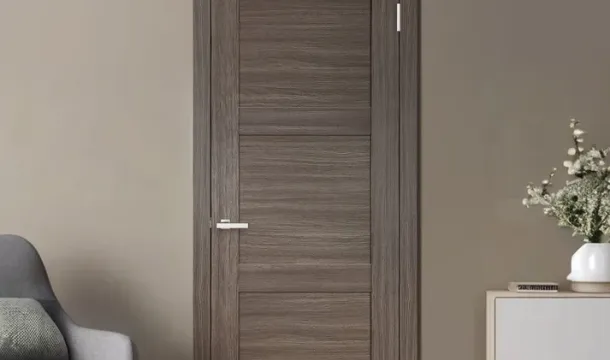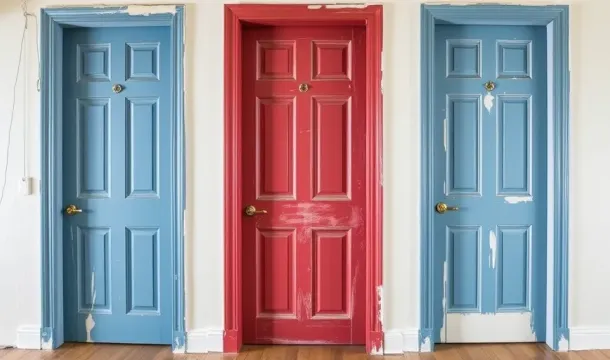The Durability of Canadian-Made Interior Doors - What to Know
Popular Articles
For homeowners seeking superior performance, opting for Canadian-crafted interior fixtures is a wise choice. The combination of high-quality materials and meticulous manufacturing processes ensures that these products stand the test of time. The strength inherent in locally sourced wood not only contributes to aesthetics but also enhances longevity, making it an ideal option for any living space.
When evaluating various options, it's essential to consider the specific attributes that define quality construction. Look for products that utilize advanced engineering techniques, which can significantly improve structural integrity. Additionally, finishes that resist wear and tear will contribute to maintaining their appearance over years of use.
The selection of materials plays a pivotal role in achieving exceptional durability. Solid wood cores, combined with reliable veneers, offer remarkable resistance against environmental changes while delivering excellent acoustic performance. Investing in such products guarantees long-lasting satisfaction and reduces the need for frequent replacements.
Ultimately, choosing well-manufactured interior solutions from Canada supports not just aesthetic goals but also practical needs. With a focus on strength and dependable materials, these fixtures promise enduring value and functionality in your home.
Material Choices for Longevity
Selecting the right materials is critical for achieving long-lasting performance in door manufacturing. Prioritize options known for their strength and resilience to ensure durability.
- Solid Wood: Offers natural strength and a timeless aesthetic. Species like oak and maple are particularly recommended due to their density and resistance to wear.
- Engineered Wood: Combines layers of wood products, enhancing stability while minimizing warping. Plywood and medium-density fiberboard (MDF) are excellent choices, providing consistent quality.
- Steel: Ideal for high-traffic areas requiring maximum security and durability. Steel doors provide robust protection against impacts and environmental elements.
- Fiberglass: A great alternative that mimics the look of wood but offers superior resistance to moisture and temperature changes, ensuring longevity in various climates.
Each material has unique properties influencing its lifespan. For instance, solid wood may require more maintenance but provides unmatched aesthetics, while fiberglass can be more cost-effective in terms of upkeep over time.
- Assess your environment: Choose materials based on exposure to moisture, temperature fluctuations, or heavy usage.
- Consider insulation properties: Materials like fiberglass not only last longer but also improve energy efficiency.
- Evaluate finish options: High-quality finishes can protect surfaces from scratches and damage, extending the life of your chosen material.
A well-informed decision regarding materials will contribute significantly to the longevity of your entryways, ensuring they withstand daily use while maintaining their visual appeal.
Impact of Climate on Performance
The geographical diversity in Canada leads to significant variations in climate, which can greatly affect the performance and longevity of manufactured panels. Extreme temperatures, humidity levels, and seasonal changes play a critical role in how these products hold up over time.
In regions with high moisture, it is essential to select materials that resist warping and swelling. Opting for engineered wood composites can enhance strength and stability under fluctuating humidity levels. These materials are designed to maintain structural integrity, ensuring that the product remains functional throughout its lifespan.
Conversely, colder climates necessitate choices that withstand low temperatures without becoming brittle. High-quality finishes can protect surfaces from cracking or chipping due to freezing conditions. Look for coatings specifically formulated for harsh winters, as they provide an added layer of defense against the elements.
Furthermore, UV exposure during warmer months can degrade certain materials over time. Selecting products with UV-resistant properties will aid in preserving both appearance and functionality, enhancing their overall durability.
A thorough understanding of local climate conditions is pivotal when choosing manufacturing techniques and materials. This knowledge ensures that the final products not only meet aesthetic demands but also perform reliably across various environmental challenges faced throughout Canada.
Maintenance Tips for Durability
Regularly inspect the hinges and hardware for any signs of wear. Tighten screws and lubricate moving parts to ensure smooth operation and prevent unnecessary strain.
Clean surfaces with a mild detergent and soft cloth to remove dust and grime. Avoid harsh chemicals that can damage finishes and affect the strength of materials.
Apply a protective sealant or finish periodically, especially in high-traffic areas. This enhances resilience against scratches and moisture while maintaining appearance.
Avoid exposing products to extreme humidity or dryness, as fluctuations can lead to warping. Utilize dehumidifiers or humidifiers to maintain stable conditions in your space.
Ensure proper sealing around frames to prevent drafts, which can compromise insulation effectiveness over time. Regularly check weather stripping and replace it if necessary.
Monitor for any signs of impact damage, such as dents or chips. Addressing these issues promptly can prevent further deterioration and preserve structural integrity.
Educate household members about gentle handling practices to minimize wear. Simple measures like avoiding slamming can significantly enhance longevity.
Comparing Costs and Lifespan
Investing in high-quality panels requires balancing initial expenses with expected longevity. Typically, premium options from local artisans might have a higher upfront cost, but their robust construction often leads to extended use, reducing the need for frequent replacements.
Standard materials like solid wood generally exhibit a longer lifespan than particleboard or hollow-core varieties. While the former may be pricier, their strength ensures they withstand daily wear better, resulting in lower total costs over time.
In terms of maintenance, selecting products with finishes that resist moisture can further enhance lifespan and save on repair costs. Regular upkeep can also mitigate deterioration caused by environmental factors, extending the functional life of these installations.
Overall, while cheaper alternatives may seem attractive initially, investing in superior materials typically results in greater value through durability and minimal long-term expenditures associated with repairs or replacements.
Popular Articles

Choosing the Perfect Interior Doors for Your Canadian Home

A Complete Guide to Choosing Interior Doors for Canadian Homes
